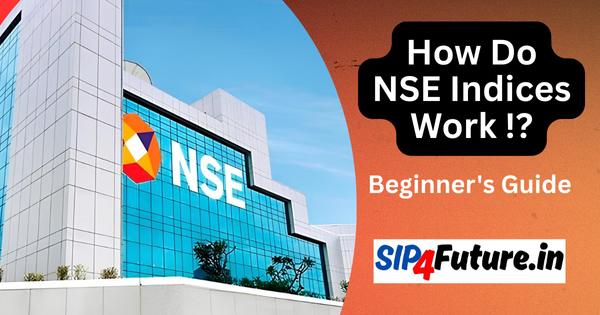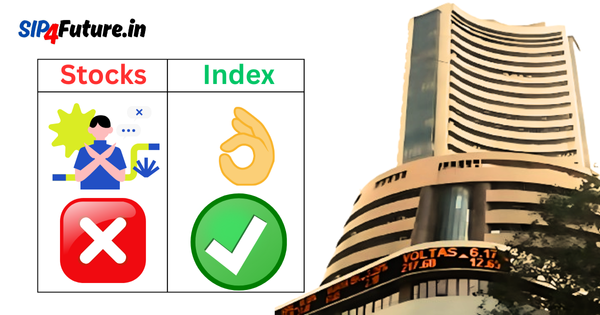Dalmia Bharat Ltd, a prominent player in India’s cement industry, has recently made headlines with a significant block trade and ongoing GST appeal developments. As of May 2, 2025, the company’s stock (DALBHARAT) on the National Stock Exchange (NSE) closed at ₹1,966.10, reflecting a modest 1.20% gain. This article delves into the intricacies of Dalmia Bharat Ltd’s current financial landscape, the implications of the GST appeal, and the broader market dynamics influencing its stock performance. By examining sector-specific factors, government policies, and global market trends, we aim to provide a comprehensive overview of DALBHARAT’s position and future outlook.
What Is Driving Dalmia Bharat Ltd’s Recent Stock Activity?
Dalmia Bharat Ltd experienced a notable block trade on May 2, 2025, involving 509,722 shares at ₹1,959.10 per share, amounting to ₹99.86 crores. Block trades, often executed by institutional investors, signal significant market interest or strategic portfolio adjustments. This transaction, reported by sources like Moneycontrol, underscores DALBHARAT’s liquidity and attractiveness to large investors despite ongoing challenges.
The cement sector, where Dalmia Bharat Ltd operates, is a cornerstone of India’s infrastructure growth. Government initiatives like the Pradhan Mantri Awas Yojana and the National Infrastructure Pipeline are fueling cement demand. However, the sector faces headwinds from rising input costs and regulatory pressures, which directly impact DALBHARAT’s stock performance. The block trade, while a positive indicator of investor confidence, occurs against the backdrop of a GST appeal that could influence the company’s financial strategy.
How Does the GST Appeal Impact Dalmia Bharat Ltd?
Dalmia Bharat Ltd’s subsidiary, Dalmia Cement (Bharat) Limited (DCBL), is grappling with a confirmed tax demand of ₹66,96,277, accompanied by an equal penalty and interest. The demand stems from an alleged ineligible Input Tax Credit (ITC) claim between October 2019 and January 2020, as reported by Business Standard. The company has announced its intent to contest this order through a second appeal, signaling a proactive stance to mitigate financial liabilities.
The GST appeal introduces uncertainty, as prolonged legal battles can strain resources and affect investor sentiment. However, the relatively modest size of the demand compared to Dalmia Bharat Ltd’s market capitalization of approximately ₹36,868.75 crore (as of April 2025) suggests that the direct financial impact may be limited. The broader concern lies in the potential for stricter GST compliance scrutiny across the cement industry, which could increase operational costs.
| GST Appeal Details | Information |
|---|---|
| Subsidiary Involved | Dalmia Cement (Bharat) Limited |
| Tax Demand | ₹66,96,277 |
| Penalty | ₹66,96,277 |
| Period of Issue | October 2019 – January 2020 |
| Company Response | Second appeal planned |
What Are the Sector-Specific Factors Influencing DALBHARAT?
The cement industry is highly sensitive to macroeconomic and policy-driven factors. Dalmia Bharat Ltd, with a production capacity of 49.5 million tonnes per annum (mtpa) as of FY25, is well-positioned to capitalize on India’s infrastructure boom. However, several sector-specific challenges and opportunities shape its stock trajectory.
Rising Input Costs
Cement production relies heavily on raw materials like limestone and coal. The Tamil Nadu government’s imposition of a ₹160 per tonne royalty on limestone, effective February 20, 2025, has increased costs for companies like Dalmia Bharat Ltd, which has 23% of its clinker capacity in the state. This policy, reported by CNBC TV18, is estimated to raise cement prices by ₹10 per bag, potentially squeezing margins unless passed on to consumers.
Infrastructure Demand
Government-led infrastructure spending, projected to continue into FY26, supports cement demand. Dalmia Bharat Ltd’s strategic expansions, including a 2.4 mtpa grinding unit in Assam and a 0.5 mtpa unit in Bihar commissioned in Q4 FY25, align with this trend. These expansions, detailed by Deccan Herald, enhance the company’s ability to serve underserved markets like southern Maharashtra.
Competitive Landscape
The cement sector is dominated by giants like UltraTech Cement and Ambuja Cements. Dalmia Bharat Ltd faces stiff competition, particularly in southern India, where aggressive pricing strategies may erode market share. Despite this, analysts like UBS remain optimistic, forecasting an 18% EBITDA CAGR for Dalmia Bharat Ltd over FY25–27, as noted by Investing.com.
How Do Government Policies Shape Dalmia Bharat Ltd’s Outlook?
Government decisions play a pivotal role in the cement industry’s performance. Beyond the Tamil Nadu limestone tax, broader policies like GST reforms and environmental regulations impact Dalmia Bharat Ltd’s operations.
GST Reforms
The GST regime, introduced in 2017, has streamlined taxation but also brought compliance challenges. The recent GST appeal against Dalmia Cement (Bharat) Limited highlights the complexities of ITC claims. The Goods and Services Tax Network portal provides resources for companies to navigate such issues, but frequent audits and demands can disrupt cash flows. Dalmia Bharat Ltd’s decision to appeal the GST order reflects a broader industry trend of contesting tax disputes to maintain financial stability.
Environmental Regulations
The cement industry is under pressure to reduce its carbon footprint. Dalmia Bharat Ltd has invested in sustainable practices, aiming for carbon neutrality by 2040. However, compliance with regulations from the Ministry of Environment, Forest and Climate Change requires significant capital expenditure, which could impact short-term profitability but enhance long-term investor appeal.
Infrastructure Investments
The Indian government’s ₹11.11 lakh crore infrastructure budget for FY25, as outlined by the Ministry of Finance, bodes well for cement companies. Dalmia Bharat Ltd’s capacity expansion plans, including a 6 mtpa addition in Karnataka and Maharashtra, position it to meet rising demand from projects like smart cities and expressways.
What Is the Global Market Context for Dalmia Bharat Ltd?
Global market dynamics, including commodity prices and trade policies, influence Dalmia Bharat Ltd’s stock performance. The cement industry is indirectly affected by global trends in energy and raw material costs.
Commodity Price Volatility
Global coal and petcoke prices, critical for cement production, have been volatile due to geopolitical tensions and supply chain disruptions. In 2025, rising energy costs, as reported by Reuters, have pressured cement manufacturers’ margins. Dalmia Bharat Ltd’s focus on operational efficiency, highlighted in its Q4 FY25 results, helps mitigate these challenges.
Export Opportunities
While Dalmia Bharat Ltd primarily serves the domestic market, global demand for cement in regions like Africa and Southeast Asia offers export potential. The company’s eastern India operations, where pricing is expected to rebound, position it to tap into export markets, as noted by Investing.com.
Global Economic Slowdown
A potential global economic slowdown in 2025, driven by high interest rates in developed economies, could dampen commodity demand. However, India’s relatively resilient economy, supported by domestic infrastructure spending, shields Dalmia Bharat Ltd from severe global headwinds. The company’s stock performance on the NSE reflects cautious optimism amid these uncertainties.
| Global Market Factors | Impact on Dalmia Bharat Ltd |
|---|---|
| Coal/Petcoke Prices | Increased production costs |
| Export Opportunities | Potential revenue growth in eastern markets |
| Global Slowdown | Limited impact due to domestic demand |
When Have Key Developments Affected DALBHARAT’s Stock?
Dalmia Bharat Ltd’s stock has experienced fluctuations driven by earnings, policy changes, and market sentiment. Key milestones in 2025 include:
- Q4 FY25 Earnings (April 2025): Dalmia Bharat Ltd reported a 38% rise in net profit to ₹435 crore, driven by operational efficiency despite a 5% year-on-year revenue decline. The stock surged nearly 5% post-earnings, as reported by . The company also announced a 250% dividend, boosting investor confidence.
- Tamil Nadu Limestone Tax (March 2025): The imposition of a ₹160 per tonne royalty led to a 2.8% stock decline on March 12, 2025, as stocks hit a 52-week low, per Economic Times.
- Block Trade and GST Appeal (May 2025): The recent block trade and GST appeal news, reported by X posts, contributed to a neutral market view, with the stock gaining 1.20% on May 2, 2025.
How Has Dalmia Bharat Ltd Performed Historically?
Dalmia Bharat Ltd’s stock has shown resilience over the years, though recent performance reflects sector challenges. Historical returns include:
- 1-Year Return (May 2024–May 2025): -12%, impacted by rising costs and competitive pressures.
- 5-Year Return (May 2020–May 2025): +158%, driven by capacity expansions and infrastructure demand.
- 3-Year Return (May 2022–May 2025): +20%, reflecting steady growth despite volatility.
These figures, sourced from BSE, highlight Dalmia Bharat Ltd’s ability to deliver long-term value, though short-term headwinds persist.
What Are the Future Targets for Dalmia Bharat Ltd?
Analysts remain cautiously optimistic about Dalmia Bharat Ltd’s growth prospects, citing its expansion plans and operational efficiency. Key target prices for DALBHARAT include:
- Systematix (April 2025): Upgraded to ‘Buy’ with a target of ₹2,257, based on 11.5x FY27E EV/EBITDA, per NDTV Profit.
- UBS (March 2025): Upgraded to ‘Buy’ with a target of ₹2,100, expecting an 18% EBITDA CAGR over FY25–27, as per Investing.com.
- CLSA (January 2025): Upgraded to ‘Outperform’ with a target of ₹2,110, citing improved earnings visibility, per CNBC TV18.
These targets suggest an upside potential of 7–15% from the current price of ₹1,966.10, driven by capacity additions and demand recovery. However, risks like regulatory pressures and input cost inflation could temper gains.
| Analyst | Rating | Target Price | Upside Potential |
|---|---|---|---|
| Systematix | Buy | ₹2,257 | 14.8% |
| UBS | Buy | ₹2,100 | 6.8% |
| CLSA | Outperform | ₹2,110 | 7.3% |
Conclusion
Dalmia Bharat Ltd stands at a critical juncture, balancing growth opportunities with regulatory and cost-related challenges. The recent block trade and GST appeal highlight the company’s resilience and market relevance, while its strategic expansions position it to capitalize on India’s infrastructure boom. Government policies, sector dynamics, and global market trends will continue to shape DALBHARAT’s stock performance. With analyst targets pointing to moderate upside, investors must weigh the company’s long-term potential against near-term uncertainties.
Disclaimer: This article is provided for educational purposes only and does not constitute financial advice. Investing in stocks like Dalmia Bharat Ltd involves risks, and individuals should conduct their own research or consult a qualified financial advisor before making investment decisions. Past performance is not indicative of future results.




